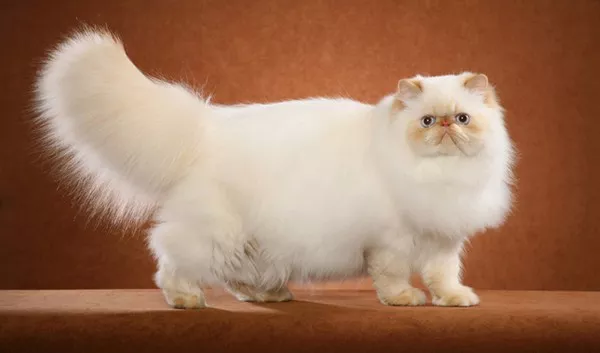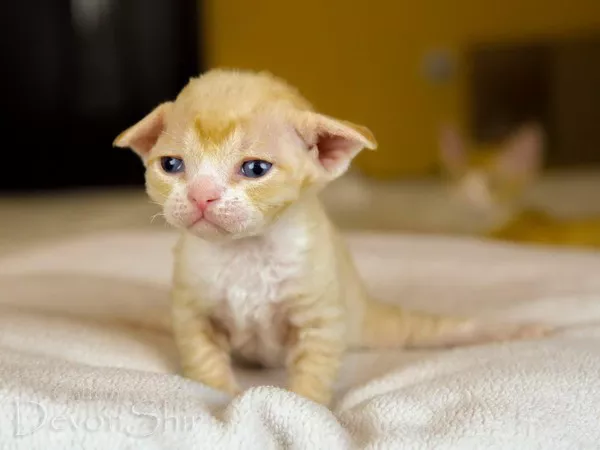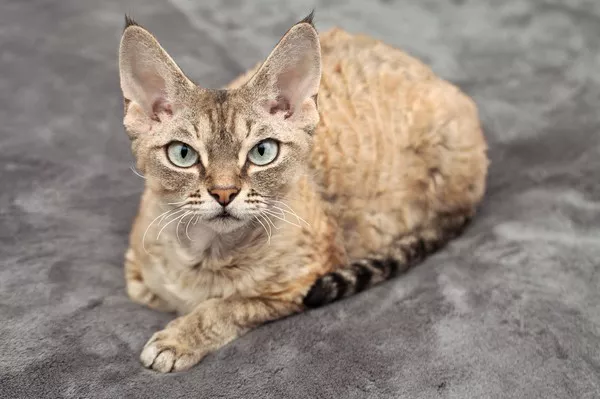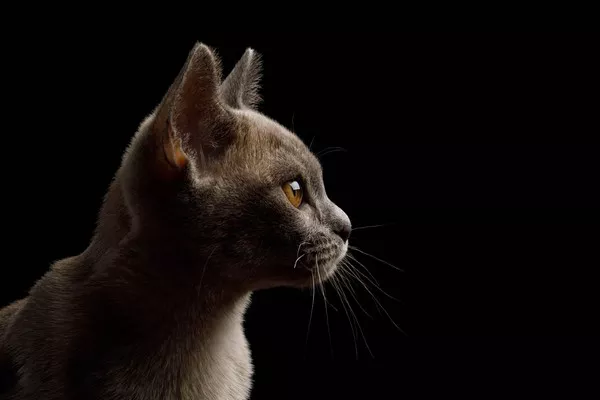The Himalayan cat, with its luxurious long coat, striking color points, and regal appearance, is undeniably captivating. However, the question of whether it’s acceptable to shave a Himalayan cat sparks debates among cat enthusiasts and veterinarians alike. The controversy revolves around the potential benefits and risks associated with shaving a cat’s coat, especially one as unique as the Himalayan. In this comprehensive exploration, we delve into the considerations surrounding the decision to shave a Himalayan cat, examining factors such as coat maintenance, health implications, and the cat’s well-being.
The Splendor of the Himalayan Coat
1. The Majesty of the Mane: Himalayan Coat Characteristics
The Himalayan cat’s coat is a defining feature that contributes to its allure. Characterized by long, silky fur and distinctive color points on the ears, face, paws, and tail, the coat reflects the breed’s Persian and Siamese ancestry. Regular grooming is essential to maintain the coat’s beauty, prevent matting, and promote the cat’s overall well-being.
2. Grooming Rituals: A Shared Journey
For Himalayan cat owners, grooming becomes a shared ritual, a bonding experience that strengthens the connection between human and feline. Brushing the cat’s coat not only ensures its cleanliness and prevents matting but also provides an opportunity for owners to check for any abnormalities, such as lumps, bumps, or skin issues.
The Debate: To Shave or Not to Shave
1. Grooming Challenges: Matting and Tangles
One of the primary reasons cat owners consider shaving their Himalayan cats is the challenge of dealing with matting and tangles. The long and dense fur of Himalayans is prone to matting, especially in areas where friction occurs, such as under the armpits, around the neck, and along the back.
2. Seasonal Considerations: Cooling in Warm Weather
Another factor that prompts the consideration of shaving is the desire to provide relief to the cat, especially in warm weather. Some cat owners believe that shaving the Himalayan’s coat during hot seasons can help prevent overheating and make the cat more comfortable.
3. Health Concerns: Skin Conditions and Allergies
In certain cases, health concerns may drive the decision to shave a Himalayan cat. Skin conditions, allergies, or medical treatments that require close monitoring of the skin may necessitate removing the cat’s fur. Shaving can provide better visibility and access to the skin for medical purposes.
4. Aesthetic Preferences: Personal Choices
Aesthetic preferences also play a role in the decision to shave a Himalayan cat. Some owners may prefer the look of a shaved cat, finding it cute or easier to maintain. However, it’s crucial to balance aesthetic choices with the cat’s well-being and natural coat requirements.
The Pros of Shaving a Himalayan Cat
1. Matting Prevention: Easier Coat Maintenance
One of the undeniable benefits of shaving a Himalayan cat is the prevention of matting and tangles. Shaved fur is less prone to matting, making grooming sessions more manageable for both the cat and the owner. This can be particularly beneficial for cats that struggle with frequent matting issues.
2. Temperature Regulation: Cooling in Warm Climates
Shaving a Himalayan cat’s coat can help with temperature regulation, especially in warm climates. Cats, like humans, can feel the heat, and a shorter coat may provide relief in hot weather. However, it’s essential to consider other alternatives, such as providing a cool environment and grooming practices, before resorting to shaving.
3. Skin Visibility: Monitoring Health Conditions
For cats with specific health conditions, such as skin allergies, infections, or post-surgical recovery, shaving the coat allows for better visibility and access to the affected areas. This is crucial for monitoring the cat’s health and ensuring that medical treatments are effectively administered.
The Cons of Shaving a Himalayan Cat
1. Altered Aesthetics: Distinctive Look Changes
Shaving a Himalayan cat alters its distinctive appearance. The breed is known for its long, flowing coat and color points, and shaving removes these defining features. Cat owners who appreciate the breed’s unique aesthetics may find the shaved look less appealing.
2. Potential for Sunburn: Reduced UV Protection
The Himalayan cat’s long coat serves as a natural barrier against the sun’s UV rays. Shaving removes this protective layer, increasing the risk of sunburn for the cat, especially in areas with intense sunlight. Sunburn can lead to discomfort, skin damage, and potential health issues.
3. Stress and Anxiety: Traumatic Experience
Shaving a cat’s coat is not always a stress-free experience. Cats may find the grooming process, including the sound of clippers and the sensation of shaving, distressing. The stress associated with shaving can have negative implications for the cat’s overall well-being and the bond between the cat and its owner.
4. Fur Growth Challenges: Uneven Regrowth
After shaving, a Himalayan cat’s fur may not regrow evenly. This can result in a patchy or uneven coat, affecting the cat’s appearance. Additionally, the regrowth process may take time, leaving the cat with a less-than-ideal aesthetic for a considerable period.
Alternatives to Shaving: Grooming Tips for Himalayan Cats
1. Regular Brushing: Mat Prevention
Regular brushing is a key component of Himalayan cat care. Brushing the cat’s coat helps prevent matting and reduces the likelihood of tangles. Establishing a consistent brushing routine from an early age contributes to a positive grooming experience for both the cat and the owner.
2. Cooling Measures: Seasonal Comfort
Instead of resorting to shaving, cat owners can implement cooling measures to help their Himalayan cats stay comfortable in warm weather. Providing a cool environment, adequate hydration, and offering cool surfaces for the cat to rest on can contribute to temperature regulation without the need for shaving.
3. Veterinary Consultations: Addressing Health Concerns
For health concerns or skin conditions, seeking the advice of a veterinarian is crucial. Veterinarians can provide targeted solutions, including specific grooming recommendations, medications, or treatments tailored to the cat’s individual needs. Professional guidance ensures that health concerns are addressed effectively without resorting to unnecessary shaving.
4. Professional Grooming Services: Expert Care
Engaging the services of a professional groomer experienced in handling long-haired breeds can be a viable alternative to at-home shaving. Professional groomers possess the skills and knowledge to groom Himalayan cats effectively, addressing matting and tangles without the potential stress associated with shaving at home.
Shaving Considerations: Making an Informed Decision
1. Individual Considerations: Cat’s Personality and Tolerance
Before deciding to shave a Himalayan cat, it’s crucial to consider the individual cat’s personality and tolerance for grooming procedures. Some cats may tolerate grooming well, while others may find it distressing. Understanding the cat’s comfort level helps determine the most suitable grooming approach.
2. Alternatives and Compromises: Finding a Balance
Cat owners can explore alternatives and compromises to meet both the cat’s needs and the owner’s preferences. This may include implementing regular grooming practices, seeking professional grooming services, or addressing specific health concerns without resorting to a full shave.
3. Consultation with Veterinarians: Informed Decision-Making
In cases where shaving is being considered for health reasons, consulting with a veterinarian is essential. Veterinarians can assess the cat’s health, provide targeted solutions for skin conditions, and offer guidance on grooming practices that align with the cat’s overall well-being.
4. Monitoring the Cat’s Response: Gauging Stress Levels
During grooming sessions, whether at home or with a professional groomer, monitoring the cat’s response is crucial. Signs of stress, anxiety, or discomfort should be addressed promptly. The goal is to maintain the cat’s well-being while addressing grooming needs effectively.
Conclusion
The decision to shave a Himalayan cat is a nuanced and controversial topic, influenced by factors such as grooming challenges, health concerns, and aesthetic preferences. While shaving may offer benefits in terms of matting prevention and temperature regulation, it comes with potential drawbacks, including altered aesthetics, stress for the cat, and increased vulnerability to sunburn.
Alternatives to shaving, such as regular brushing, cooling measures, professional grooming services, and veterinary consultations, provide cat owners with a range of options to address grooming challenges and health concerns without resorting to a complete shave. Making an informed decision involves considering the individual cat’s needs, preferences, and health status, ultimately prioritizing the cat’s well-being and overall quality of life. The journey of caring for a Himalayan cat’s coat is a shared endeavor between cat and owner, where the goal is to strike a balance that ensures both a healthy, happy cat and an aesthetically pleasing companion.

























